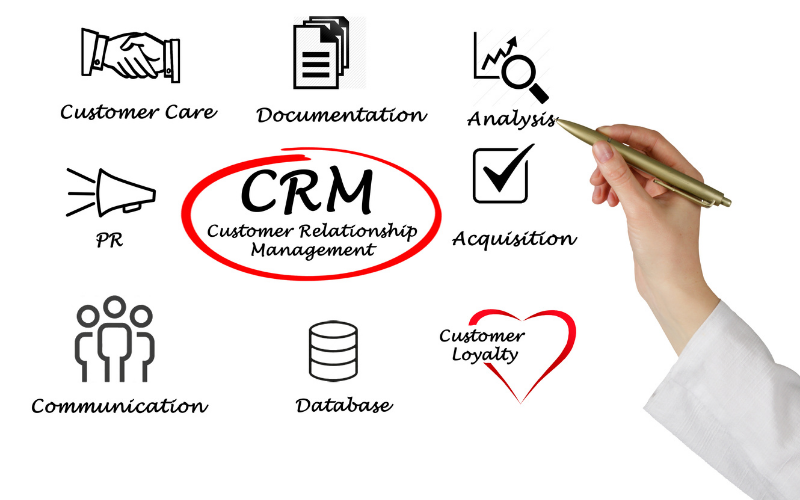Business Growth Challenges: Why Most Companies Get Stuck
When Growth Stalls Look Inside the Walls
Every business owner desires growth: more clients, more revenue, and more opportunities. So, you set plans, forecast, invest in sales and marketing, and discuss scaling your business. But then reality hits like a brick wall. The momentum dies, progress grinds to a halt, and you're left spinning your wheels in frustration, wondering where it all went wrong.
More often than not, when I delve into these situations with clients, I discover that the root cause isn’t the strategy, the market, or the product
It’s the team
The Reality of Business Growth Plateaus
Here’s the uncomfortable truth that many business owners don't want to face: the biggest obstacle to your growth may be the people who are already inside your business.
They are not bad people. They aren’t necessarily under performers. They might be loyal, long-serving, and well-liked by everyone. However, they have built their roles and work habits around maintaining the status quo. Any threat to this comfort zone becomes a problem.
Technical teams often view growth as a threat; more clients mean more tickets, increased stress, and longer hours. Administrative staff may raise concerns when processes evolve, volumes increase, or expectations shift. The noise of resistance grows louder but is rarely voiced openly. It’s subtle, quiet a slow drag on momentum.
A Real-World Example
I recall a time when our company was experiencing rapid growth, consistently achieving 30% year-on-year growth across multiple locations. The model was working, and the market was receptive. However, one branch wasn’t keeping pace.
We examined the numbers, the market and the sales efforts. Nothing seemed amiss.
Once we got involved directly, the situation became clear: the issue lay within the administrative team. The sales administrator had settled into a routine that perfectly matched the current workload, creating no pressure or challenges. As we added new clients or deals, we encountered delays, errors, and numerous reasons why "the system" couldn't handle the changes.
In contrast, another branch had an administrator managing twice the volume without complaint. The same software, the same processes, but a different mindset.
That was the real issue, not a lack of capability, but complacency.
When to Pivot Your Growth Strategy
When someone has been in a role for an extended period, they often tailor their day around what works for them. They automate their energy and minimise friction, mastering “just enough” to get by. This is acceptable until you decide to grow.
Growth demands flexibility and requires individuals who can adapt, evolve, stretch, and collaborate in new ways. If your business has grown but your team hasn’t, you’ll encounter friction.
Most owners mistakenly attribute this friction to external issues:
- "We need better systems."
- "The market's quieter this year."
- "Sales haven't landed yet."
In reality, the problems are internal; they are behavioural and cultural.
Red Flags to Watch For
If growth feels more challenging than it should, keep an eye out for these warning signs:
- Routine over progress: If every Monday looks the same as the last, something’s wrong.
- Growth causes groans: New clients should be exciting. If they are seen as burdens, you have a cultural problem.
- Different results, same resources: If one team produces twice the output of another, the issue isn’t the tools, it’s the attitude.
- Excuses and inertia: "We've always done it this way" is not a valid reason; it’s a warning.
5 Steps to Support Continuous Growth
The first step is to recognise the issue. Many owners are too close to their team or too emotionally invested to see it clearly.
Here’s what to do next:
1. Audit behaviours, not just performance: Identify who is adaptable, who embraces change, and who quietly resists it.
2. Challenge the status quo: Ask tough questions and dig into the "why" behind certain practices.
3. Set clear growth expectations: Communicate that the business is moving forward and that everyone is expected to keep up.
4. Support the right people: Invest in those who demonstrate the right mindset. Coach or reassign those who don’t.
5. Be willing to reset: If someone no longer fits the future vision of the business, don’t let past loyalty hold you back.
Creating a Growth-Focused Company Culture
Growth isn’t just a number on a whiteboard; it represents a cultural shift. It requires more than just sales and marketing; it needs alignment throughout the organisation from the front line to the back office, and from engineering to finance. Everyone must pull in the same direction.
This alignment occurs only when your people not only engage with growth but also buy into it wholeheartedly.
Here’s the truth:
Even the best strategy will fail in a business designed for comfort. In contrast, a business built for adaptability, energy, and ownership is the one that scales.
So, if you find yourself stuck, don’t just examine the pipeline.
Look at the people.
Inside the walls is where the real work begins.
If you would like to know more about planning and winning new business why not join our exclusive Sellerly Sales Clubs?
Thanks for reading,
Paul Lloyd, Sellerly.
MSP/ VAR Sales Problem Solver,
Sales Management Mentor
020 8148 6475 / paul@sellerly.co.uk










